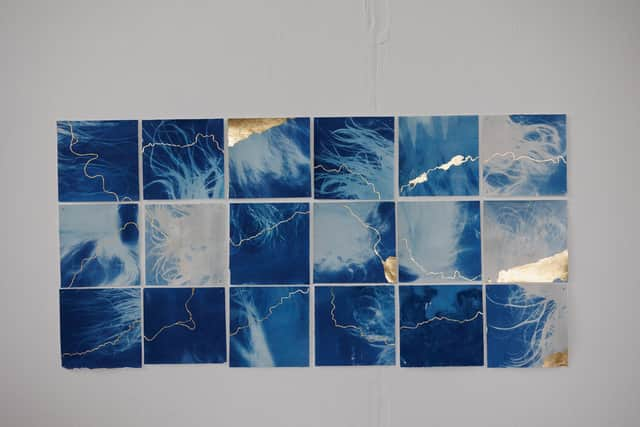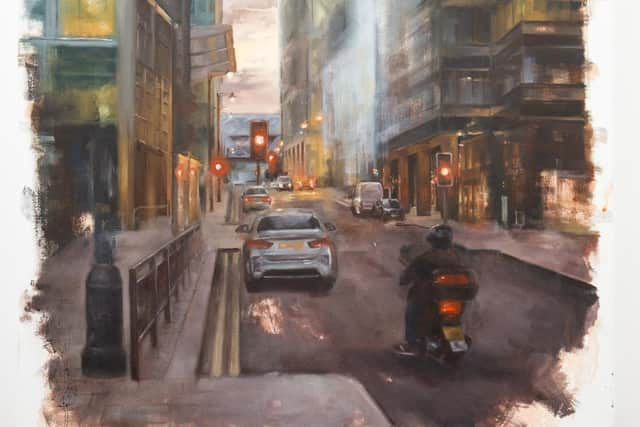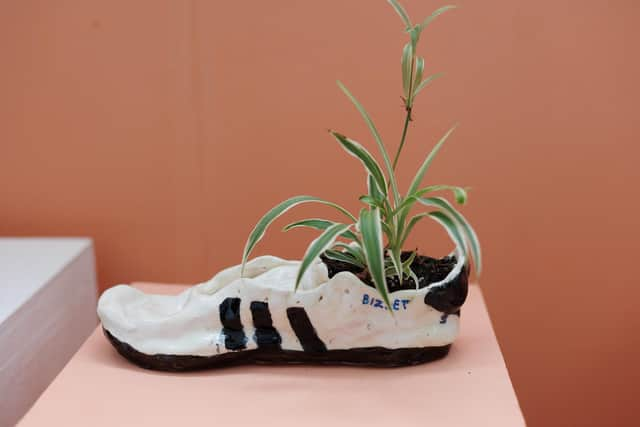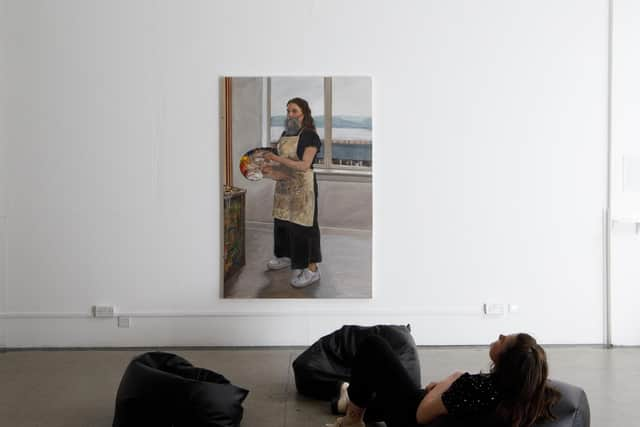Art review: Duncan of Jordanstone Degree Show 2023
Duncan of Jordanstone College of Art & Design Degree Show 2023 ****
It’s May, so it must be time for Duncan of Jordanstone College of Art & Design in Dundee to launch us into degree show season. The college’s labyrinthine building is once again bursting with energy and talent this year, as over 350 students in Fine Art, Applied Arts and Architecture celebrate the end of their courses and present their ideas to the world.
Advertisement
Hide AdIn Fine Art (now called Contemporary Art Practice), the busiest place this year must have been the ceramics studio with many students including this as an element of multidisciplinary practices. However, Duncan of Jordanstone also has a strong reputation for painting and, happily, this is a vintage year for painters.


Vlada Popescu is a superb realist painter. In one series she captures passengers on the underground, those unguarded moments when each person on a train is lost in their own thoughts. Another explores vistas of city streets in different levels of fading light. Sam Gilbert also paints commuters though in a looser style, and demonstrates how his drawings develop into paintings.
Kirstin Mackinnon is a fine figurative painter working from life, adept at skin tone and the subtleties of facial expression. Her show is in the Cooper Gallery foyer, and – a word to the wise – look above your head. Thomas Hope favours expressionism, working in black, white and gold, capturing the emotions beneath the surface of the everyday. Mathieu Cardosi is an accomplished landscape painter in the picturesque tradition, focussing on the haunting beauty of abandoned spaces.
In tone, this is a reflective and often introspective show, with a number of artists looking for what one describes as “a place to reflect on the overwhelming post-lockdown world”. Several have recreated their own personal refuges: Heather Bews-Ivens has made a homely space with a sofa, record player and games console, plants and books – on the walls are some very assured abstract paintings.
Kate Hyatt’s visceral and unsettling show is “a snapshot of my mind from a time of deep personal pain and struggle”, exploring her experience of anxiety and assault, while Elizabeth Donaldson immerses us in the sweet sorrow of a break-up. (“How can something so beautiful to turn into something so painful?” Ah, to be 22 again.)


Libby Lilburn invites us to see the world as she does, as a neurodiverse person growing up in an isolated spot with only her close family and some 45 pets. Her animals are a delight. Astrid Batts creates an immersive environment too – the women’s toilets in a club. Perhaps she does the job a little too well: the soundtrack of late-night regurgitation is disconcerting two rooms away.
Advertisement
Hide AdSeveral students reflect on the nature of home and heritage. Emma Russell’s two-channel film, A Phonecall With My Sister, places the viewer between two places, Donegal where Russell grew up and Dundee where she studies, succinctly articulating the sense of moving between two “homes”. She’s one of just a few choosing film as their primary medium. Morgan Barnett is a fine printmaker, exploring the Orkney heritage of her family. Eve McGovern Miller has undertaken an immersive engagement with the Tay valley, looking at the relationships between humans, animals and land.
Elsewhere, there is vigorous questioning about what art is, and how it justifies its place in the world. Dilal Singh digs deep into what it means to be an artist and the social and political implications of art-making, all the while producing an energetic outpouring of paintings, prints and sculpture.
Advertisement
Hide AdAilith Stewart has constructed an igloo-like space from recyclable materials, and invites everyone to draw on the inside with charcoal, having come to the conclusion that art is “a tool of social problem-solving and stress relief”. Connor Leslie has built a Give & Take Drawing Apparatus in which two people simultaneously attempt to draw a still life while tethered to one another by their dominant hand.


It’s always good to see self-declared and vigorous working-class voices in art schools. Ryan Cairns (making work as “Ned baguette”) has a confident, streetsy style which expresses itself in collages, large-scale graffiti-style painting and ceramic trainers which are used as plant containers. Kristopher Malone’s stop-motion film, The Fuds, about three housing scheme buddies who decide it’s time to “get f***** sorted”, is clearly the product of a great deal of time and expertise: his hand-made models and sets are included in the show.
Tom Fairlamb’s clever mechanised pieces use machines and technology to mimic body functions: a bin bag which inflates and deflates using an electric fan, water which drips through an intestine-like coil of plastic tubing, two masks attempting to kiss via a smartphone. R Macpherson has created The Museum of the Forgotten around the fascinating idea that a person dies twice, once when they shuffle off this mortal coil and then again the last time their name is spoken. Macpherson moves this idea forward by telling the stories of forgotten figures from history, using audio consoles around the building.
Lana Ferguson is one of the keenest ceramicists, making an impressive array of hand-thrown objects and vessels. Wanting to hold on to the playfulness in her practice rather that just present rows of finished objects, she uses them in various visual gags and invites viewers to play with them in a series of sand trays.
There are lots of strong individual voices here: Jaeden Cargill’s assemblages, Ben Johnston’s Henry Moore-ish sculptural forms, June Barton’s projection of coloured lights on a room full of silhouette figures. However, I wonder if some artists are trying too hard to find a conceptual basis for their work.


“Nothing is complicated about my work,” says Gail Neckel, who likes taking photographs of the natural world, and she’s right: her photographs of ice are simply interesting and skilled in themselves. Is it not enough to paint accomplished portraits, or turn out ceramic bottles and jars worthy of a Morandi painting? In the end, it’s the work that counts, and that might be worth remembering, as these newly minted artists take their talents out into the world.
Until 28 May